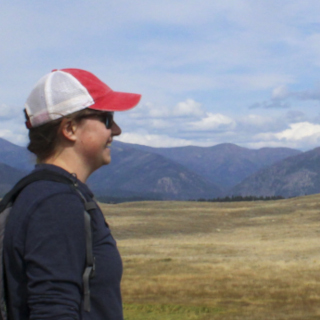Command Line Usage
Overview
Command line options allow OpenSIMPPLLE to be run without the user interface. The options may appear in any order.
Options
-allstatesreport
Produce an all states report, which is designed to identify the maximum, minimum, average, and standard deviation for each state.
-allstatesrules file
Rules file for the all states report.
-area file
Load an area.
-areasummary
Produce an area summary.
-boundarymultiplier double
Rate of spread beyond the border of a landscape. This value multiplied with the acreage of the source unit is added to the total fire area when the cellular percolation fire spread algorithm (Keane) attempts to spread to a missing adjacency. The purpose of this behavior is to limit pooling that occurs when a fire cannot spread beyond the boundary of an area. Set the multiplier to zero to disable this behavior. The default multiplier is zero.
-discountedcost double
Calculate and discount suppression costs at the specified rate. When this parameter is not present, no discount cost is applied.
-extremewindmultiplier double
Multiply the wind speed when the fire event is classified as extreme. This parameter is used by the cellular percolation fire spread algorithm (Keane). The default multiplier is zero.
-firespreadmodel name
Method for spreading fires. Supported values are keane and simpplle. The default value is keane if required attributes are present in the loaded area.
-firesuppression
Apply fire suppression logic during the simulation.
-gisupdateandspread
Produce GIS update and spread files.
-help
Display available commands.
-historic
Use historic pathways.
-invasivelogic name
Apply the specified type of invasive species logic. Invasive species logic only exists in Eastside Region One (R1) and Colorado Plateau (R1, MESA-VERDE-NP).
-knowledge file
Load a user knowledge file.
-probabilityreports
Produce probability reports.
-processschedule file
Schedule processes with a .processsched file. This file is produced by the lock in processes editor in OpenSIMPPLLE.
-recyclesteps integer
Limit the number of time steps kept in memory at once. The minimum number of time steps is 10, since the likelihood of certain disturbance processes depends on past state.
-runs integer
Number of times to run a simulation. The default number of runs is one.
-savearea file
Save the loaded area to a file.
-saveknowledge file
Save the loaded knowledge to a file.
-saveresults directory
Save the simulation results to a directory.
-seed integer
Seed the pseudorandom number generator. The seed is applied once before the first simulation run begins.
-simmethod name
Method for selecting disturbance processes. Supported methods are stochastic, highest, and stand-development. The default method is stochastic.
-simulate
Run a simulation. This requires a zone and an area to be loaded.
-steps integer
Number of time steps in each run. The default number of steps is 5.
-trackingspeciesreport
Produce a tracking species report.
-trackownership
Stratify the *-ls.txt output file by ownership when there are multiple simulations.
-trackspecialarea
Stratify the *-ls.txt output file by special area when there are multiple simulations.
-treatmentschedule file
Schedule treatments with a .sk_treatsched file. This file is produced by the treatment schedule editor in OpenSIMPPLLE.
-version
Print the version number.
-winddirectionvariability degrees
Vary the wind direction in each vegetation unit during fire spread. This parameter is only used by the cellular percolation fire spread algorithm (Keane). The default value is zero.
-windspeedvariability milesPerHour
Vary the wind speed in each vegetation unit during fire spread. This parameter is only used by the cellular percolation fire spread algorithm (Keane). The default value is zero.
-writetodatabase
Write each vegetative state to a database once it has been calculated. This parameter is ignored if time steps are not recycled.
-yearly
Use a one year interval between time steps. Interactions between processes, such as fire, insects, or the response of grasses to yearly moisture changes, make more sense with yearly time steps.
-zone name
Load knowledge for a built-in regional zone. Legal values are colorado-front-range, colorado-plateau, eastside-region-one, gila, great-plains-steppe, mixed-grass-prairie, northern-central-rockies, sierra-nevada, south-central-alaska, southern-california, southwest-utah, teton, western-great-plains-steppe, and westside-region-one.
Basic Usage on Microsoft Windows
Open the command prompt
- Press windows key + R to open the run dialog
- Type cmd and press the enter key
- A command prompt appears
Run from the command line
- Open the command prompt
- Change to the directory containing OpenSIMPPLLE using the cd command
- Type java -jar opensimpplle.jar followed by any options and press the enter key
Run from a batch file
- Create an empty text file
- Enter any number of commands on separate lines
- Save the file with a .bat extension
- Open the command prompt
- Change to the directory containing the batch file
- Run the file by typing the name of the file and pressing the enter key
Schedule a batch file
- Press the windows key to open the start menu
- Type Task Scheduler into the search box
- Select Create a Basic Task from the action pane
- Select One Time from the trigger section
- Select Start a Program from the action section
- Select the batch file in Program/Script
- Click Finish to create the task
Examples
Running a Simulation
java -jar opensimpplle.jar -zone westside-region-one -area areas/hungry-horse.zip -runs 1 -steps 3 -saveresults results/hungry-horse -simulateResaving an Area
java -jar opensimpplle.jar -zone westside-region-one -area areas/hungry-horse-old.area -savearea areas/hungry-horse.zipResaving User Knowledge
java -jar opensimpplle.jar -zone westside-region-one -knowledge myknowledge.sysknowledge -saveknowledge mynewknowledge.sysknowledge
Launching the User Interface
java -jar opensimpplle.jar
